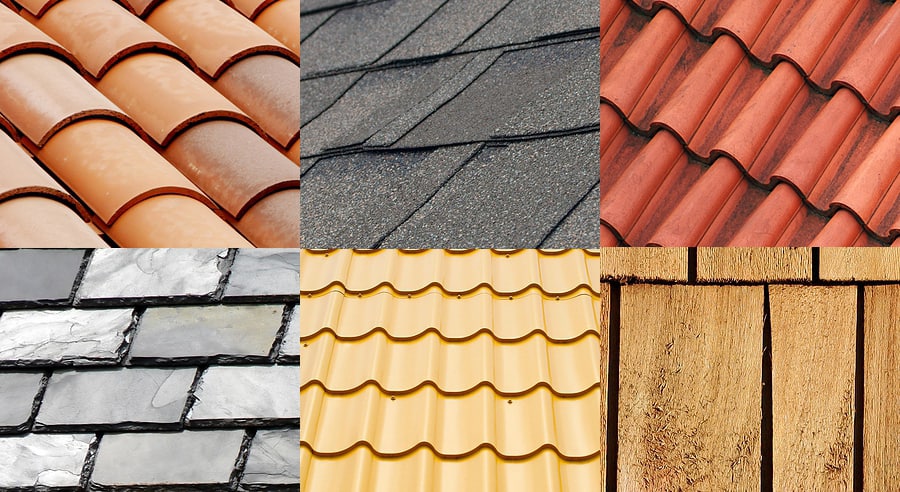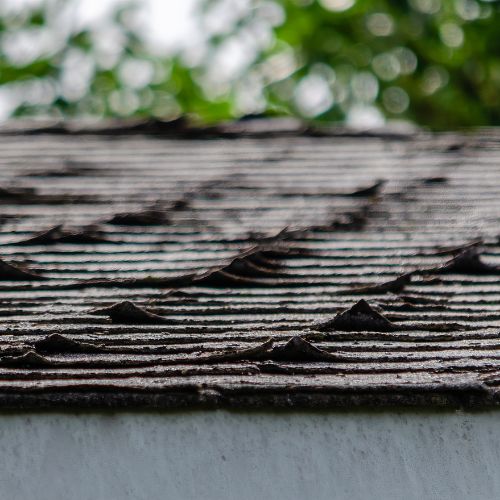Keep Dry Roofing LLC: Your Relied On Partner for Residential Roofing Solutions
Keep Dry Roofing LLC: Your Relied On Partner for Residential Roofing Solutions
Blog Article
Ultimate Checklist for Reviewing the Problem of Your Roof Covering System and Identifying Potential Issues
By complying with a detailed list customized to review the different elements of your roof, you can get important understandings right into its current state and preempt any approaching problems. This proactive method not only guarantees the long life of your roofing system but also contributes to keeping the structural integrity of your home.

Roof Covering Evaluation Devices
When conducting a complete assessment of a roofing system, using appropriate roofing inspection devices is essential for accurate examination and evaluation. These tools help in discovering possible problems, examining the overall problem of the roof covering, and figuring out the needed maintenance or repairs required. One of the primary devices utilized in roofing examinations is a moisture meter, which helps identify areas of entraped moisture within the roof layers that might suggest leaks or water damage. Infrared thermography cams are also valuable as they can spot temperature variations that may signify insulation troubles or leakages not noticeable to the nude eye. In addition, drones furnished with high-resolution video cameras provide airborne views of the roof, enabling assessors to assess hard-to-reach areas securely.

In addition, a digital video camera or smartphone is essential for documenting the inspection procedure, recording photos of any damage or locations of worry for additional assessment. Various other devices such as binoculars, roof probes, and safety equipment like ladders and harnesses are vital for a secure and thorough roof covering assessment. By utilizing these tools successfully, examiners can carry out thorough assessments, determine problems immediately, and suggest appropriate solutions to preserve the roofing's stability.
Outside Roofing System Evaluation
To extensively examine the problem of a roof system, an outside roof covering analysis is necessary to evaluate the surface area for indicators of wear, damages, or possible problems. During an exterior roofing system evaluation, it is essential to begin by analyzing the roof shingles or roof covering product.

In addition, examine the rain gutters and downspouts for clogs or damage that can lead to water back-up and overflow onto the roof (Keep Dry Roofing LLC). Trim any kind of overhanging branches that can massage versus the roofing surface or provide very easy access for insects. Evaluate the total sanitation of the roof covering, as debris build-up can retain wetness and accelerate roofing system wear and tear. By performing a complete outside roof examination, property owners can identify and attend to potential issues before they intensify into costly fixings.
Inside Ceiling Assessment
Upon entering the indoor room, a thorough assessment of the ceiling is necessary to determine any type of indicators of water damage, leaks, or structural problems. Begin by aesthetically checking the ceiling for any kind of staining, drooping, or peeling off paint, as these can suggest water infiltration from the roof. Try to find water discolorations or mold development, which are clear indicators of a leak. Pay close focus to any kind of areas where the ceiling fulfills the walls or where lights are set up, as these prevail areas for water invasion. Furthermore, look for any indicators of sagging or disproportion in the ceiling, which can recommend structural troubles that require immediate interest. Utilize a flashlight to check out hard-to-reach corners and crevices extensively. Any type of stuffy smells or moisture in the air ought to also increase problems about prospective roof problems. Taking the time to assess the indoor ceiling can aid discover roof covering issues at an early stage and prevent more damages to the property.
Attic Evaluation
An in-depth assessment of the attic room is crucial in evaluating the general problem and efficiency of the roof. The attic room functions as a vital element of the roof, providing insights right into potential issues that might not show up from the exterior or interior of the house. Throughout the attic evaluation, it is very important to look for see here now indicators of water damages, such as water stains, mold and mildew development, or decaying wood, which might indicate a leakage in the roof covering. Furthermore, check the insulation for any indicators of deterioration or compression, as correct insulation is critical for maintaining power performance and protecting against ice dams. Search for appropriate ventilation to guarantee that excess warmth and moisture are being appropriately ventilated out of the attic to stop moisture-related problems. Analyze the attic room structure for any kind of signs of drooping or damage, discover this as these problems might compromise the stability of the entire roofing system. Consistently assessing the attic can help identify potential roofing troubles beforehand, enabling timely repair work and maintenance to prolong the life-span of the roof.
Resolving Common Roof Problems
Recognizing and without delay settling common roofing issues is crucial in maintaining the architectural integrity and durability of a roof system. One of one of the most constant concerns home owners face is a leaking roofing, commonly triggered by harmed or missing out on roof shingles, inappropriate installation, or tatty blinking. It's important to attend to leakages quickly to stop water damage to the inside of the building and possible mold and mildew growth. An additional usual trouble is roofing ventilation problems, which can cause excess warmth and dampness accumulation in the attic room, creating early degeneration of the roof covering materials. Poor ventilation can likewise lead to greater energy expenses because official source of ineffective temperature level policy. Additionally, the accumulation of debris such as leaves, branches, or snow on the roofing system can obstruct water drainage systems and result in water pooling, which may ultimately trigger roofing leaks or architectural damage. Regular examinations and maintenance can help determine and attend to these typical roofing troubles before they rise into even more substantial issues.
Final Thought
In final thought, a thorough examination of your roofing system is necessary to recognize potential problems and make certain the general problem of your roofing. By making use of the appropriate devices and carrying out attic, outside, and inside examinations, usual roofing system troubles can be addressed promptly. Routine upkeep and timely repair work can assist protect against significant damage and lengthen the lifespan of your roofing system.
One of the main tools used in roofing system inspections is a dampness meter, which helps recognize areas of entraped wetness within the roof layers that could indicate leakages or water damage. Various other tools such as field glasses, roofing probes, and security devices like harnesses and ladders are essential for a risk-free and detailed roof covering inspection.To completely analyze the condition of a roofing system, an exterior roofing evaluation is vital to evaluate the surface for indicators of wear, damages, or possible problems. Assess the overall tidiness of the roofing system, as particles accumulation can retain wetness and accelerate roofing damage. Keep Dry Roofing LLC. Furthermore, the build-up of debris such as fallen leaves, branches, or snow on the roofing can block drainage systems and lead to water pooling, which might ultimately trigger roofing leakages or structural damages
Report this page